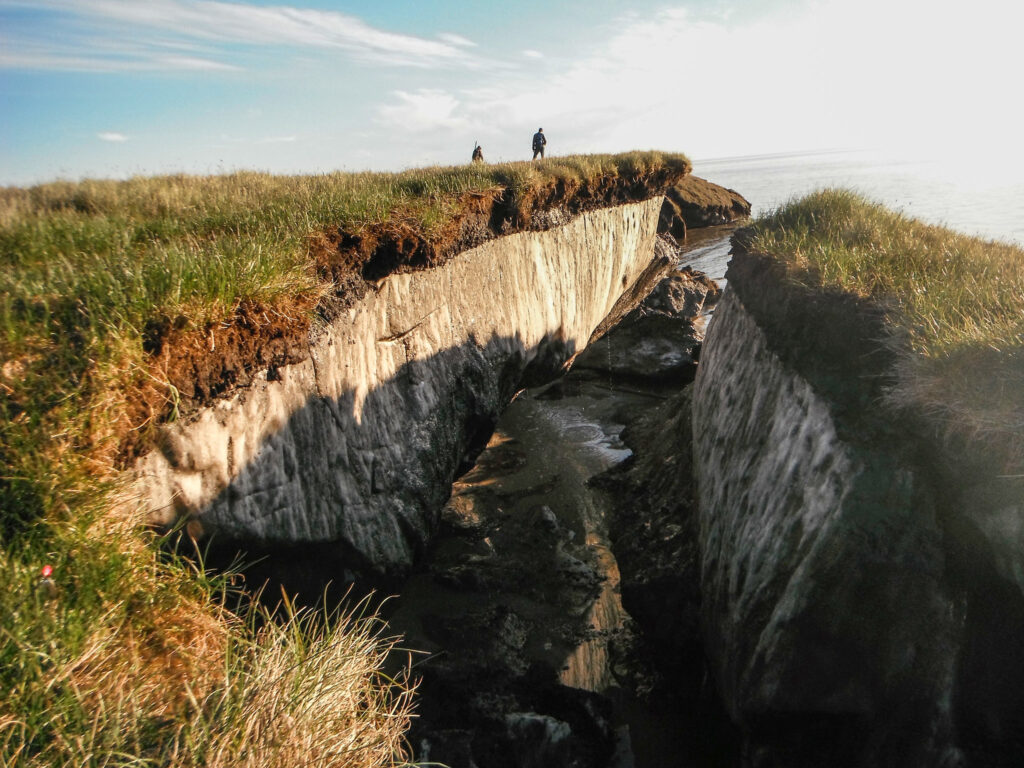
Permafrost is frozen soil, rock or sediment that can be as much as a few thousand feet thick. To qualify as permafrost , the material has to have been at or below the freezing point of water for two or more years. Most of it is located in high latitudes in the Arctic and Antarctic regions. Permafrost covers nearly a quarter of the exposed land in the Northern Hemisphere.
Permafrost contains enormous amounts of carbon in the form of frozen soil that includes remnants of plants and animals, in some cases that have been there for more than 20,000 years.
The Arctic region has been warming faster than any place else on earth and thawing permafrost is already unleashing methane and carbon dioxide to the atmosphere, adding to the global temperature rise.
Apart from the impact on the global climate, thawing permafrost is making the ground unstable and is causing serious problems for local communities.
Recent research using satellite observations provides an overview of the Arctic to identify communities and infrastructure that will be at risk over the next 30 years.
Using high-resolution data from the Copernicus Sentinel satellite missions along with ground-based data going back to 1997, researchers modeled the permafrost ground temperature trends and extrapolated them out to 2050. The results were that 55% of the infrastructure currently located on permafrost and within 60 miles of the Arctic coastline – infrastructure on which many communities rely – is likely to be affected.
Most human activity in the Arctic takes place along permafrost coasts. Permafrost thaw is exposing these coasts to rapid change that threatens biodiversity and puts pressure on communities.
**********
Web Links
Satellites pinpoint communities at risk of permafrost thaw
Photo, posted January 24, 2014, courtesy of Brandt Meixell / USGS via Flickr.
Earth Wise is a production of WAMC Northeast Public Radio.
Leave a Reply